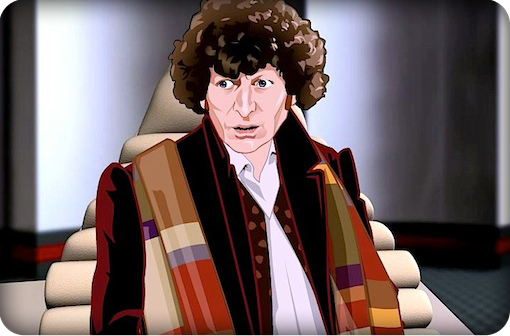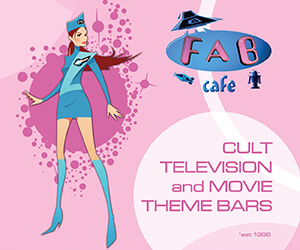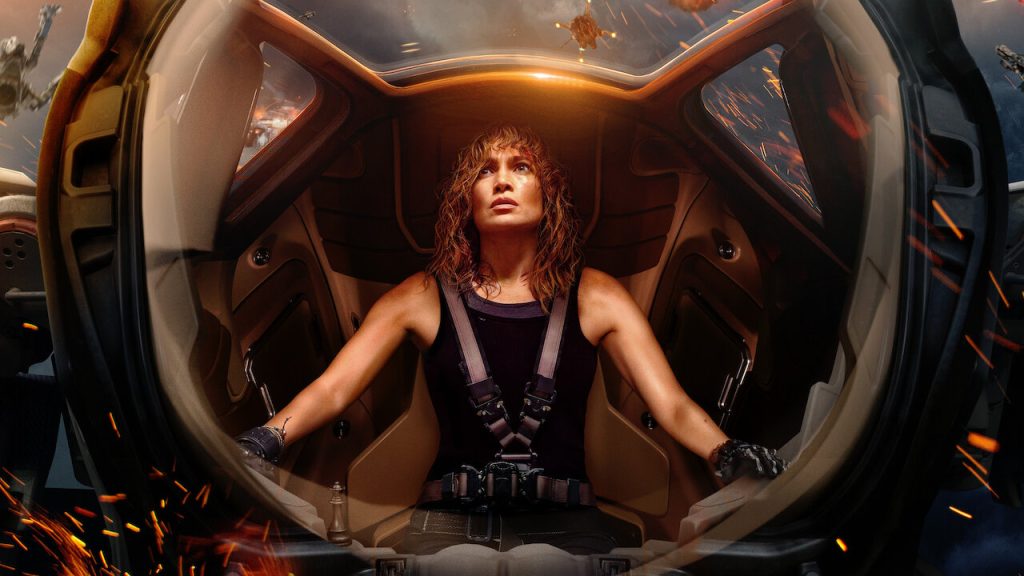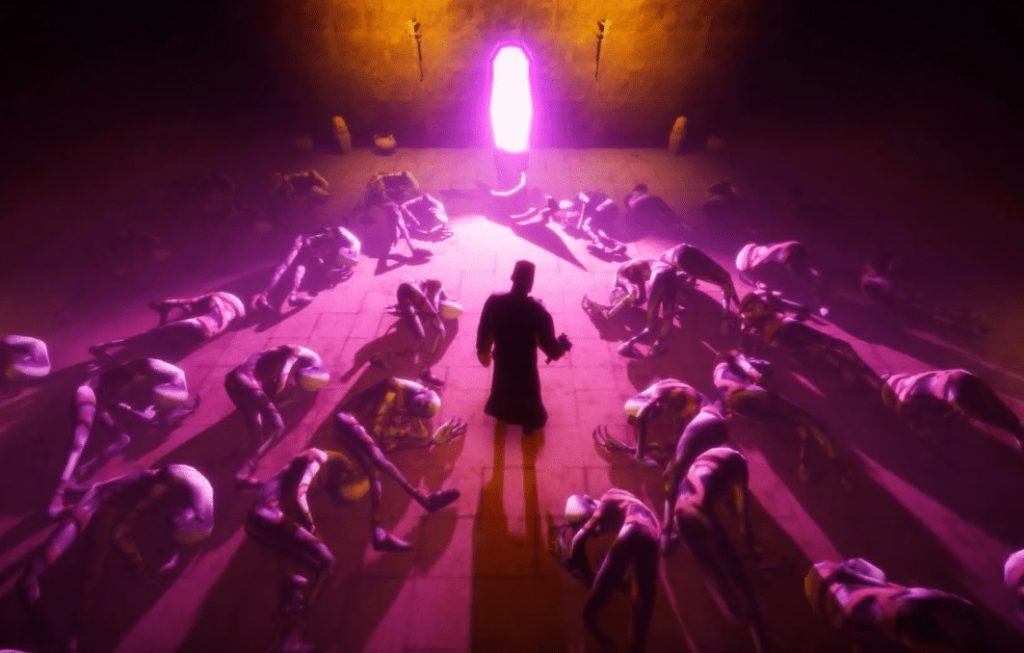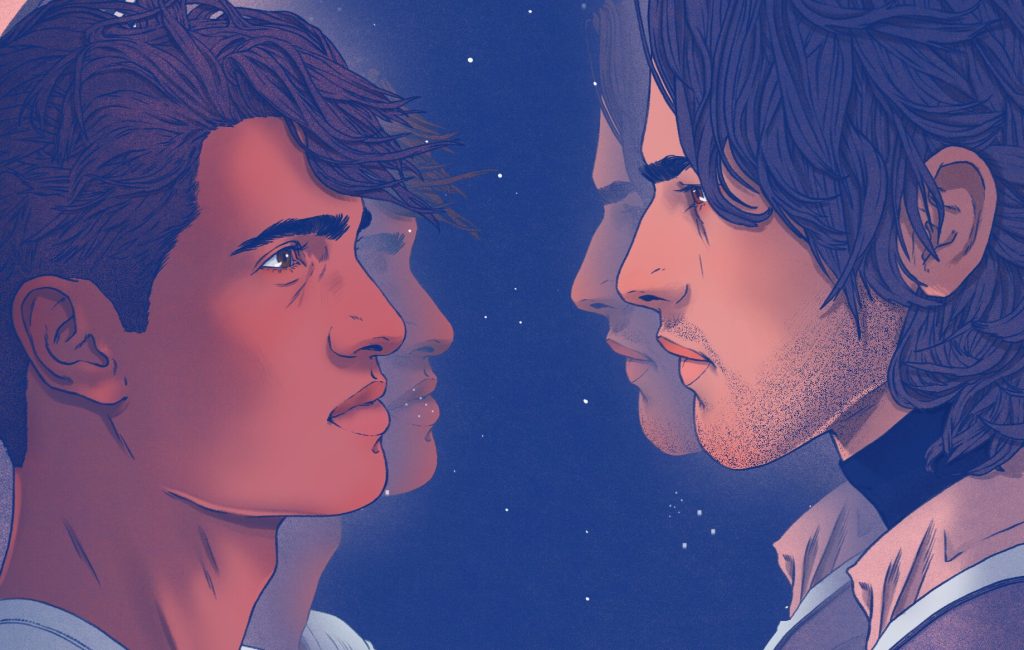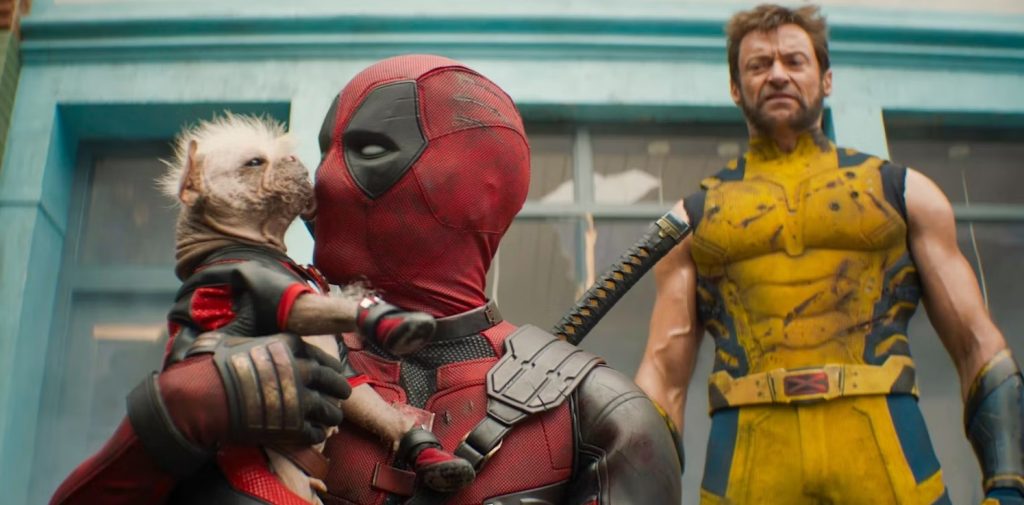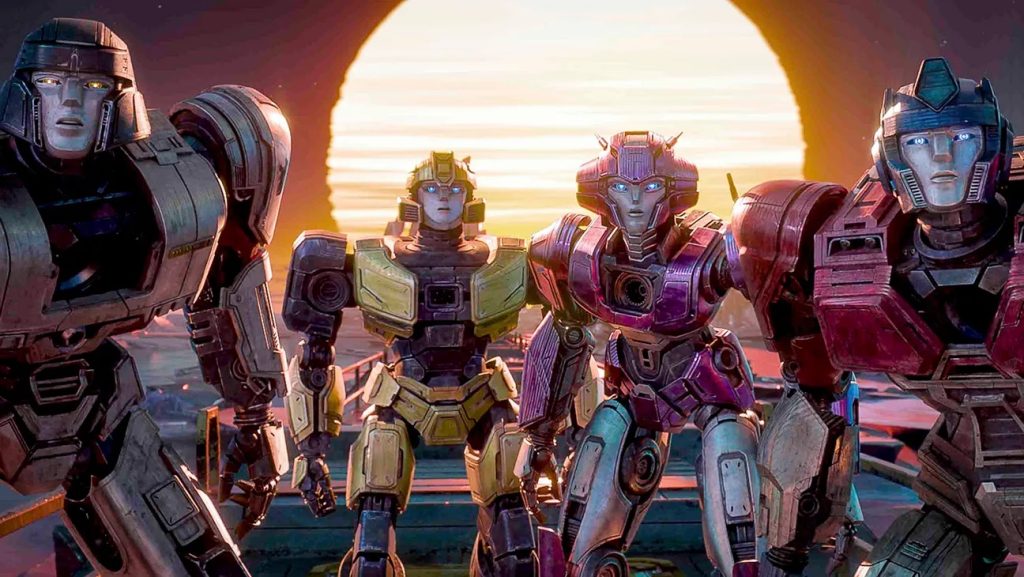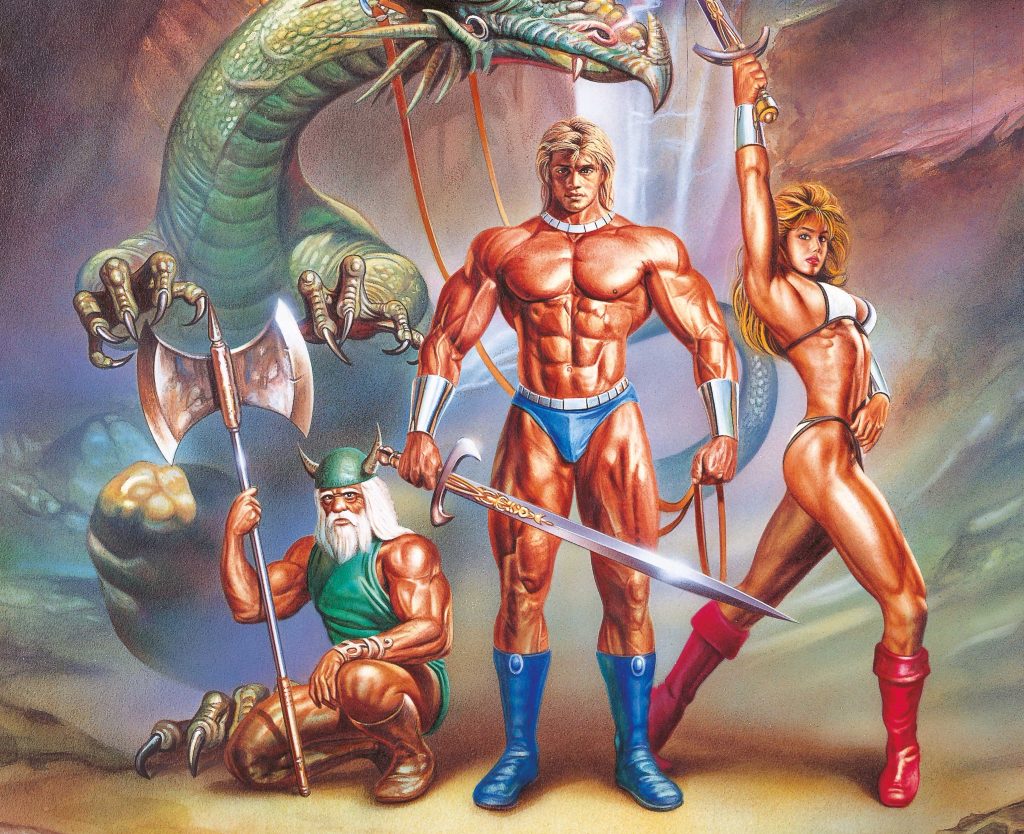A few days ago, I wrote an article about the Ian Levine-sponsored completion of the abandoned 1980 Tom Baker Doctor Who serial Shada, Doctor Who and the Shada Man. I spoke about how eager I was to see it get an official release through 2|entertain, so that we fans could make up there own minds about it. Following the publication of the article, Ian and I exchanged a few emails, the upshot of which was that Ian very kindly invited me to watch the story. After seeing Shada, I asked him if he would be okay with me writing a review of it…
Firstly, a confession of sorts: I am not a fan of animation. Which is to say, were I to be randomly flicking through the television channels of an evening, it is extremely doubtful that I’d settle on one that was showing any kind of cartoon (not even The Simpsons). In fact, and even though they are Doctor Who related, I tried my best but struggled somewhat with both Dreamland and particularly The Infinite Quest.
Secondly: the caveat. I was thrilled when 2|entertain released The Invasion, with the first and fourth episodes animated to complete the adventure. In an ideal world, the whole story would exist in the archives, but failing that, this was by far the best way, in my opinion, to release as full and rewarding a version of the story as possible. And in this particular instance, what with the animation being geared towards a live-action soundtrack (and so therefore with an entirely different feel – and pace – to an ‘ordinary’ cartoon), I thoroughly enjoyed the result.
So it was that I approached Shada with simultaneously high hopes and low expectations. To my delight – and I was fearful that I’d find it awful, barely watchable; or worse still, just incredibly dull. But it works. It works extremely well.

What works, in part, is that the animation never tries to pull off more than it is capable of. If you were expecting naturalism, then forget it. This is no multi-million pound Pixar-style CGI recreation of how the original production might have looked. The movement is occasionally quite jerky, and in other places rather smooth. And although the production and character design are quite superb (the characters, particularly the faces, are like slightly cartoonish versions of the originals, which is just as it should be), there is no point at which you’d be mistaken for thinking you were watching ‘live-action’ during the animated sequences. The mouths are perfectly synched and the characters are animated so that they’re very rarely completely still, at least for any significant amount of time, and this helps enormously while watching long sequences for which nothing was originally filmed. It is a cartoon. It is not an attempt to re-stage Shada without an acknowledgement that the thirty-two intervening years had ever happened.
The fact that the animation remains resolutely an animation, rather than attempting to ape the live-action sequences, is absolutely the right choice. As I suggested might be the case in the original article, the way the finished Shada moves fairly frequently between the two media is made less jarring, contrarily, by how much of a jump it is from one to the other. If the animated sequences had tried to be too close to the live-action, then the changes would have been a distraction. As it is, the changes are so significant, you accept them and move on. I likened how I envisioned the effect would be to that of the VHS release of The Ambassadors of Death, in which colour footage alternates with black and white during the middle of the episodes. That’s exactly how this feels; the first time the change from live-action to animation occurs, it is obviously a disappointment (how could the loss of the live-action not be? The original video issue of Shada suffered, of course, from the same problem – only far more so, as there was very little in narrative terms to replace it), but then you accept it, you get over it, and the second time it happens, it is considerably less of a jolt. Considerably less of a jolt, in fact, than the move back into animation for Episode Four of The Invasion.
In fact, by the time I was into Part Two of this, I was actually looking forward to the animation, in a completely different way than that in which I’d originally been looking forward to seeing it (which is to say, out of curiosity about the experience). There was a tipping point at which the story began to exert its hold to the extent that I was anticipating the bits I’d never seen before, purely because I wanted to find out what was going to happen. That’s a mark of how successfully the two media have been welded together.
Like I say, there’s no ‘naturalism’ to the animation, but I personally find it very hard to accept animation that attempts to be naturalistic anyway (Final Fantasy, I’m looking at you), and the methods used here seem far more suitable – for after all, the Doctor Who of the period was, more than it had been for any of the previous decade, an exercise in the suspension of disbelief, and that continues to be the case with this version. I can even confess that at one point, the action moved back into the studio footage from an animated segment, and it was several seconds before I even registered the change had happened. I’m not going to pretend that there won’t be people who thoroughly dislike the kind of animation that’s been used (every bit as much as there will be people who thoroughly dislike the fact that they’ve animated this at all), but I for one was extremely relieved to find that not only was it not a struggle to watch, it was actually a very easy-going and enjoyable experience.
It’s a far, far easier, more coherent, and even consistent watch than the VHS version with Tom Baker narrating the missing sequences, for instance.

Something that helps enormously is the level at which the performances are pitched. The webcast animations suffered slightly in that the actors (whether by accident or by design) were pitching more towards ‘radio’, while the animations of the missing episodes of Doctor Who (as good as they have been so far) aren’t helped by the fact that the level of performance is (necessarily) intended for live-action (and thus there’s a kind of ‘performance gap’ between the intention and the ultimate realisation). Here, a happy medium seems to have been found, and it helps to sell the ‘reality’ of what you’re watching enormously. Even Christopher Neame, who is – entirely in keeping with the existing 1979 sequences – portraying Skagra in as agitated a fashion as most of the other Season Seventeen villains (the character is somewhere between Nightmare of Eden’s Tryst and Lady Adrasta from The Creature from the Pit), manages to hit upon a level of projection that never strays into the area of telling when you should be showing. Lalla Ward sounds slightly older, slightly deeper in the animated sequences, but has enough recent experience of reprising the role of Romana that she hits her mark perfectly, and both Daniel Hill and Victoria Burgoyne sound like they could have recorded their own parts the week after the original production stopped.
You want to know about ‘Tom’ though, right?
First, I must state that the timbre of Paul Jones’ voice is different to that of Tom Baker’s, and so there’s never any question of the fact that you’re listening to a different man. Having said that, there were occasions, particularly towards the end of the story (during sequences in which the ‘original Tom’ hadn’t been on screen for a fair amount of time), when it was very easy to forget that you weren’t listening to (or watching, even) the authentic fourth Doctor after all. The timbre of the voice might be different, but the cadences are the same. There are moments that are scarily familiar, even. The performance is set to fourth Doctor ‘maxed up’ a little, but if anything, that’s probably because attempting a subtle Tom Baker would have been incredibly difficult, and as the story progresses, Jones is comfortable enough to tone it down. The archness is in keeping with the Tom of much of the season anyway. And Jones is kept absolutely to the script as written down, which makes the achievement of matching Tom – both in Jones’ performance and in Douglas Adams’ writing – all the more remarkable. There are ad-libs and alterations to the script in the live-action sequences from 1979, but what sound like Tom Baker-isms in the 2011 animated segments were all there in Adams’ words, and they feel like a natural continuation of the older recording.
If Jones is indeed replaced should Shada ever get to a DVD release (and the real Tom Baker’s voice dubbed over his parts, as has been widely speculated could be the case), it will be a considerable shame. And if Tom is still unwilling to appear in this re-creation of Shada, then strangely enough, his loss will be our gain.
The other two performers that sadly have been lost to the re-creation are David Brierley as K9, and Denis Carey as Chronotis. Fortunately neither is in any way a loss to the overall production, on the one hand because Carey’s part was almost entirely completed in the first place (and the more than capable Steven O’Donnell is a more than adequate replacement, for the few lines of dialogue Chronotis does have during the animated sequences), and on the other because in the case of K9, John Leeson has stepped in to voice the part. It’s a very bizarre situation when the animated substitute has more authenticity than the replacement original!
Given the choices of which figures were chosen to represent the criminals the Time Lords “simply wanted to forget about,” then the delightfully silly final episode that should have been, is here replaced by an equally delightful and equally silly final episode that more than lives up to it, but probably in different ways. The wasting of a Dalek, Cyberman, Wirrn and Zygon in Adams’ script is at least compensated for by the fact that they look good in cartoon form. It’s like having the Weetabix cards turn up on screen – a childhood dream come true! As for the Krargs, they’re very much a typical Season Seventeen monster, second cousins to the Mandrels and probably just as disappointing, had Shada made it to broadcast way back then. They look better in the animation.
There’s been a fair amount of speculation over what music was going to be used in the animated sequences, about whether Keff McCulloch’s ‘stand in’ score for the VHS release would be extended across the whole production, or whether maybe some old Dudley Simpson cues might have been ‘borrowed’ for use instead. In the event, neither is the case. Both of those options would have involved the soundtrack having to be remixed again in the event of a DVD release, but Ian’s preference for cleared library music ensures that such tampering is unnecessary and therefore at his and 2|entertain’s discretion. The kind of music that’s been chosen is very much in the mould of the black and white Doug Camfield-directed serials, and this works better than you’d expect; the simplicity and starkness of the sounds lending the feel of an old Universal horror to a lot of scenes that are by necessity (given what was left to film at the time Shada was abandoned) taking place largely in corridors and control rooms. It’s an odd combination that actually bestows greater character upon some fairly lengthy scenes in some pretty featureless sets (all authentically reproduced, and all very Season Seventeen), than McCulloch’s score managed for the location filming.
The animated sequences won’t be to everyone’s liking, and there’s no getting around that. The Invasion split fandom down the middle, and this would too. Personally, I found them very easy to adjust to, and for reasons I’ve explained elsewhere, the complete change (of voice, music, ambient soundscape – very nicely put together too – and picture) between the one medium and the other, makes each one of those elements less of an individual adjustment as a result. Like I said earlier, it works.
The best thing of all is that it lets “Douglas Adams’ Shada” stand up and be counted, for the first time ever. The scripts are a very nice thing to have, but it’s the on-screen chemistry that makes Season Seventeen sing, and as brilliant as I’ve no doubt Gareth Roberts’ novelisation will be, I suspect it will read as more of an homage than an authentic telling. The webcast version, sadly, is like a child of two fathers: the recasting and reinvention get the job done, but they miss the point of what Shada really is, and that’s the culmination of Douglas Adams’ year in the Doctor Who script editor’s chair, and the finale to a season of the show that was unique in character and temperament. The VHS release with Tom Baker’s narration is effectively just a clips show, a collection of ‘deleted scenes’ without a home, and barely even begins to ‘tell the story’. This version is Douglas Adams’ Shada, as near as we’ll ever have the opportunity of seeing it.

So what is Douglas Adams’ Shada, then? For more than thirty years, and in spite of the afore-mentioned attempts to tell it, it has remained a mystery, an enigma, a legend. Thanks to Ian Levine and his animators (and the cast, of course), I now know. If I’d always thought before, having judged the story by its extant presentation, that Shada was a rather dry and dull way to have finished the season that included The Horns of Nimon and Destiny of the Daleks, then I couldn’t have been more wrong. Watching it in this complete-as-possible version, it suddenly comes to life. It’s slow, sure, but almost hypnotically so; it’s like the ballad at the end of a particularly lively pop album – the themes are all there, but this time they’re being played as an elegy rather than vivace. It’s just as silly as you’d expect from a Season Seventeen story; but it’s also thoughtful and introspective as well. It might not quite be the classic some would want, and it lacks the panache of City of Death, but it’s a slow-burning pleasure that I’m grateful to have finally experienced. Seriously, you haven’t seen Shada until you’ve seen this Shada.
Is this the ideal way to experience it then? No, absolutely not; the ideal way to experience Shada would be if they’d finished making it back in 1979. Is this the best available way to experience Shada, then? Totally. It isn’t ‘perfect’, by any means. But it does the job every bit as well as you could wish for.
There will still be those who think what Ian Levine has done is sacrilegious. That either the way he’s done it or the way he’s gone about doing it is wrong. And there will be those who can’t abide the animation or the switches between live-action and re-creation, or who feel to have recast the Doctor is unforgivable.
But if you’re of an open enough mind to accept the compromise solution to a three decades old problem, and if you’re willing to suspend your disbelief for the duration (and after all, isn’t that one of the core requirements of classic series Doctor Who?), then this hybridisation will prove a satisfying and enlightening experience. I certainly feel that I’ve finally ‘seen’ Shada now, that I’ve understood it and enjoyed it – and that the intentions of Douglas Adams have finally found their way to the screen – and that’s something I couldn’t have said before this.
Let’s just hope it makes its way out into the world. It deserves to. And I’m pretty sure the majority of the people reading this would want it to, as well. And even if Dan Hall, the commissioning editor at 2|entertain, still feels that it isn’t quite adequate enough for the main feature presentation, then how about this for a solution? The forthcoming Invasion of the Dinosaurs DVD is setting a precedent whereby the preferred option for watching an episode is not the default choice; the colour version of Part One will be available as an ‘extra’, via the angle feature, with the black and white version the one that is chosen via Play All.
So is there any reason Ian Levine’s Shada couldn’t be available on a future release as Disc Two (the ‘Special Edition’?), with the 1992 Tom Baker-narrated collection of extant footage as the ‘Feature Presentation’ on Disc One? That way everybody would get to see it, and nobody could have any complaints. It wouldn’t be a ‘perfect’ solution, but it would still see Shada out in the world where it belongs. Just a thought. Although I firmly believe it’s worthy of pride of place on Disc One anyway. It would definitely be my ‘default version’.
Here at Starburst, we always like to score our reviews out of ten. It would be impossible to score a project like this objectively, as the elements that unite it are so disparate, and the result so unusual. However, for the sheer audacity of the project and the tenacity with which it has been completed, for the sheer amount of enjoyment I got out of watching it, and the manner in which it opened the story up for me in ways I hadn’t experienced it before, I can only give it:


